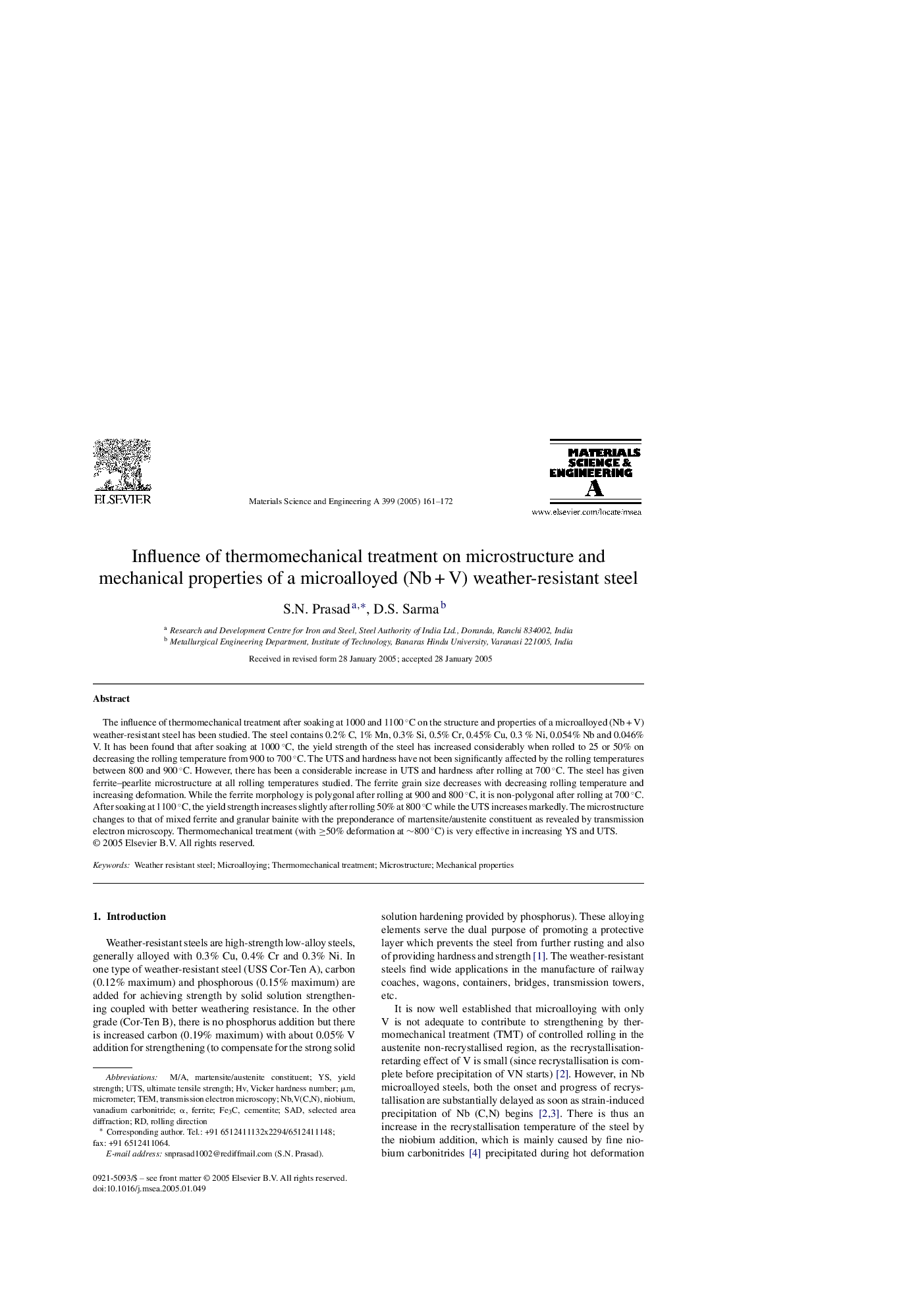| Article ID | Journal | Published Year | Pages | File Type |
|---|---|---|---|---|
| 9796185 | Materials Science and Engineering: A | 2005 | 12 Pages |
Abstract
The influence of thermomechanical treatment after soaking at 1000 and 1100 °C on the structure and properties of a microalloyed (Nb + V) weather-resistant steel has been studied. The steel contains 0.2% C, 1% Mn, 0.3% Si, 0.5% Cr, 0.45% Cu, 0.3 % Ni, 0.054% Nb and 0.046% V. It has been found that after soaking at 1000 °C, the yield strength of the steel has increased considerably when rolled to 25 or 50% on decreasing the rolling temperature from 900 to 700 °C. The UTS and hardness have not been significantly affected by the rolling temperatures between 800 and 900 °C. However, there has been a considerable increase in UTS and hardness after rolling at 700 °C. The steel has given ferrite-pearlite microstructure at all rolling temperatures studied. The ferrite grain size decreases with decreasing rolling temperature and increasing deformation. While the ferrite morphology is polygonal after rolling at 900 and 800 °C, it is non-polygonal after rolling at 700 °C. After soaking at 1100 °C, the yield strength increases slightly after rolling 50% at 800 °C while the UTS increases markedly. The microstructure changes to that of mixed ferrite and granular bainite with the preponderance of martensite/austenite constituent as revealed by transmission electron microscopy. Thermomechanical treatment (with â¥50% deformation at â¼800 °C) is very effective in increasing YS and UTS.
Keywords
Related Topics
Physical Sciences and Engineering
Materials Science
Materials Science (General)
Authors
S.N. Prasad, D.S. Sarma,
